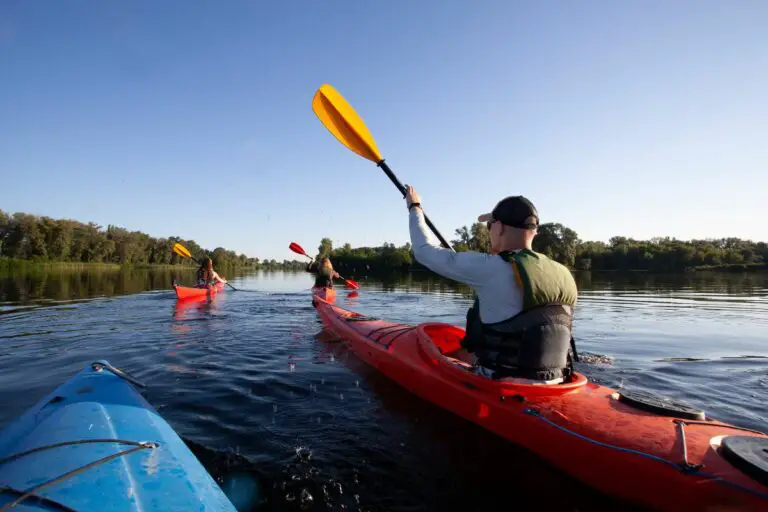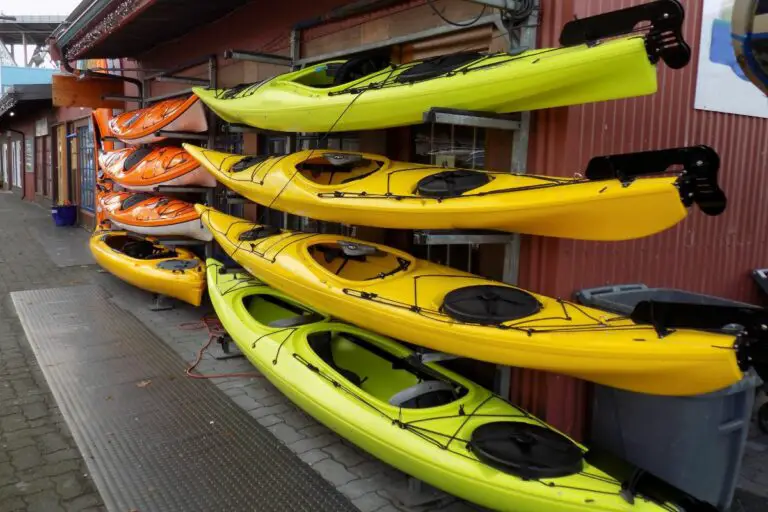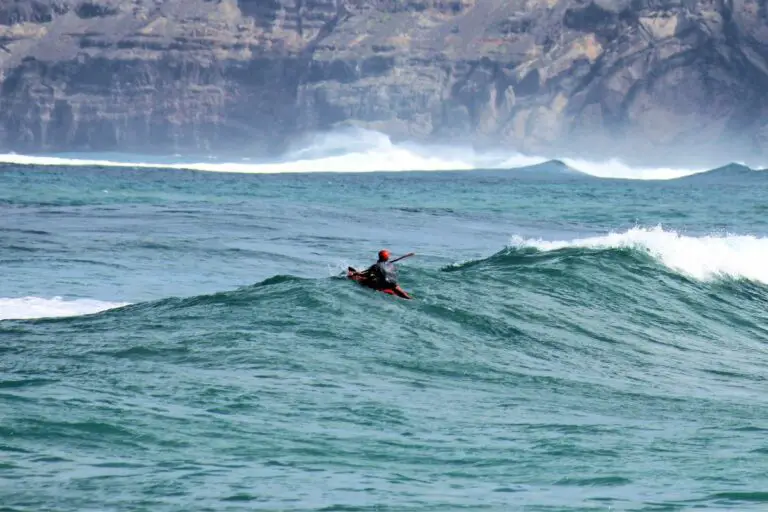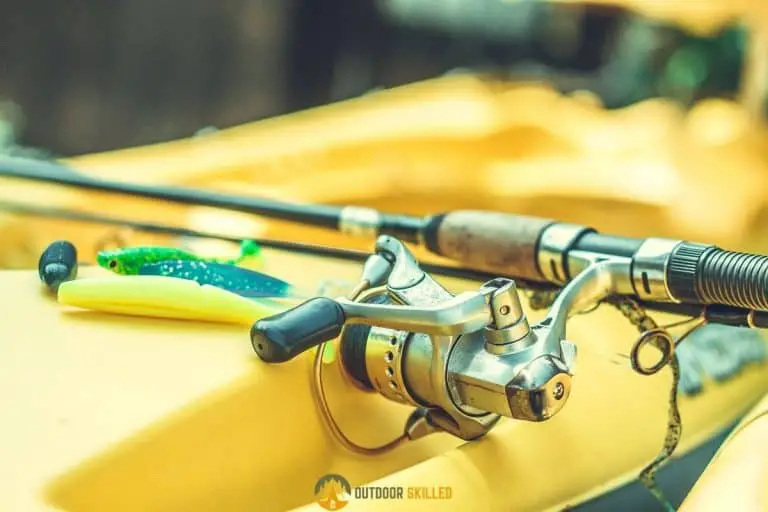From Head to Toe: How to Stay Warm Kayaking in The Cold
Ah, the crisp air, the sound of oars slicing through the water, and the feeling of…wait, is that frost forming on your eyebrows? Kayaking in cold weather can be an invigorating experience, but let’s face it, nobody wants to turn into a human ice pop.
Lucky for you, we’ve got the hot tips (pun intended) on how to stay warm while kayaking.
You can stay warm kayaking by:
- Wearing appropriate clothes made of waterproof, quick-drying materials
- Layering up clothes for extra insulation
- Covering up extremities by wearing a hat, waterproof shoes, and gloves
- Staying hydrated
- Bringing along hot drinks to raise your core body temperature
So, grab a cup of cocoa, and let’s get toasty as we go through how to stay warm kayaking in cold weather.
Table of Contents
How to Stay Warm Kayaking?

Kayaking is an excellent way to explore the outdoors, but it can also be a chilly experience if you’re not properly prepared.
So, let’s break down what you can do to stay warm kayaking to ensure you have a comfortable and safe experience.
Wear Appropriate Clothes
When kayaking, it’s essential to wear appropriate clothes made of waterproof, quick-drying materials.
Avoid clothes made of cotton as they can retain moisture, causing you to become cold and uncomfortable quickly.
Instead, go for synthetic materials such as polyester, nylon, or fleece that are designed to keep you warm. Also, consider investing in a waterproof kayaking jacket or drysuit to keep you more protected from the water.
Layer Up
Layering up clothes is the key when it comes to staying warm out on the water. Wearing several thin layers will provide you with more insulation than wearing one thick layer.
Generally, it’s recommended to wear at least three layers: a base layer, a middle insulating layer, and an outer layer.
- The base layer should be made of moisture-wicking material, such as synthetic fabrics like polyester or nylon, that will keep sweat away from your skin and help regulate your body temperature.
- The middle insulating layer should provide warmth and retain heat. Fleece, wool, or down are good choices for this layer. You can adjust the thickness and material of this layer based on the temperature and weather conditions.
- The outer layer should be windproof and waterproof to protect you from the elements. A paddling jacket or dry suit can be a great choice for this layer.
However, it’s essential to note that the number of layers you need to wear can vary based on the weather conditions and water temperature.
For example, in colder conditions, you may need additional layers to stay warm, while in warmer conditions, you may only need a base layer and an outer layer. So, you need to consider the weather conditions and adjust your clothing accordingly.
Cover Extremities
It’s crucial to cover your extremities to prevent heat loss.
You can wear a hat or beanie to keep your head and ears warm, waterproof shoes or neoprene booties to keep your feet dry and warm, and gloves or mittens to protect your hands from the cold and wind.
The gloves should also be made of waterproof materials such as neoprene or Gore-Tex to prevent them from getting wet.
Stay Hydrated
Staying hydrated is important for your overall health and well-being while kayaking, but it can also help keep you warm.
Even though you may not feel thirsty while paddling, your body is still losing fluids, and dehydration can make you more susceptible to hypothermia. So, drinking fluids regularly is important, even if you don’t feel thirsty.
Water is the best choice for staying hydrated, but sports drinks can also be beneficial as they contain electrolytes, which can help replenish the body’s fluids and minerals lost through sweating. However, it’s important to note that sports drinks also contain sugar, which can cause an energy crash if consumed in large quantities.
Bring Along Hot Drinks
Bringing along hot drinks like tea, cocoa, or coffee can help raise your core body temperature and keep you warm while kayaking. These drinks can provide a quick boost of warmth, and the heat generated by your body metabolizing the drink can help keep you warm for a longer time.
When packing the drinks, make sure to put them in a thermos or an insulated bottle to keep them warm longer, and make sure that the thermos or insulated bottle is spill-proof to prevent any accidents on the water.
It’s also important to note that hot drinks should not be used as a substitute for proper clothing. Even with hot drinks, you can still get hypothermia if you’re not dressed appropriately.
Why Is It Important to Stay Warm When Kayaking?

It’s important to stay warm when kayaking because getting too cold or wet while out on the water will not only make you uncomfortable but can also endanger your life.
So, here are some of the risks of kayaking in cold weather:
Hypothermia
Hypothermia is a condition where your body loses heat faster than it can produce it, resulting in a dangerously low body temperature. It is a significant risk as it can happen quickly and can be life-threatening if not treated promptly.
Symptoms of hypothermia include shivering, confusion, lethargy, and loss of coordination.
Decreased dexterity and mobility
When you’re cold, your body tends to conserve heat by reducing blood flow to the extremities, such as the hands and feet. This can result in decreased dexterity and mobility, which can make it more challenging to control your kayak or perform other essential tasks.
Decreased decision-making abilities
Being cold can also impair your cognitive function, leading to poor decision-making abilities. This can be dangerous when kayaking, especially in challenging conditions or unfamiliar waters.
Increased risk of accidents
You may be more prone to accidents or injuries when your body is cold. Reduced mobility and dexterity can make reacting quickly to unexpected situations more challenging, increasing the risk of accidents.
To avoid these risks, you need to take be prepared and take precautions to stay warm when kayaking in cold weather. Additionally, it’s essential to listen to your body, monitor your temperature, and take immediate action if you start to feel cold or experience any symptoms of hypothermia.
Kayak your way to Freedom
- On a budget? Check out the best fishing kayaks under $500 here and the best Fishing Kayaks under $1,000 here. Or Check the best Cheap Kayaks here.
- Going fishing? Here are the best Ocean fishing kayaks, and here are the best River Fishing Kayaks.
- You can also find the best Fly Fishing Kayaks here and the best Bass Fishing Boats here.
- A bit experienced? Check out the best modular kayaks here and the best tandem fishing kayaks here.
- Looking for something special? Check out my favorite Ducky kayaks here.
- Navigate your way with these awesome and beginner-friendly Kayak compasses.
- Going Hunting? These Duck hunting kayaks will give you an unfair advantage!
- Have a need for speed? These motorized kayaks will get you moving.
- Protect yourself from the sun with these Kayak shades, and make your kayak more comfortable with these Kayak seats.
- Keep your feet dry and warm with these superb Kayaking shoes.
- Going Kayaking in cold water? Stay warm with these Kayaking gloves.
- Paddle Less, Fish More with the Best Kayak Motors
- Looking to get a trolling motor on your kayak? Check out the best kayak trolling motor mounts here.
If you like this article, please share it or pin it, you can find the share buttons below. We will really appreciate it ❤️

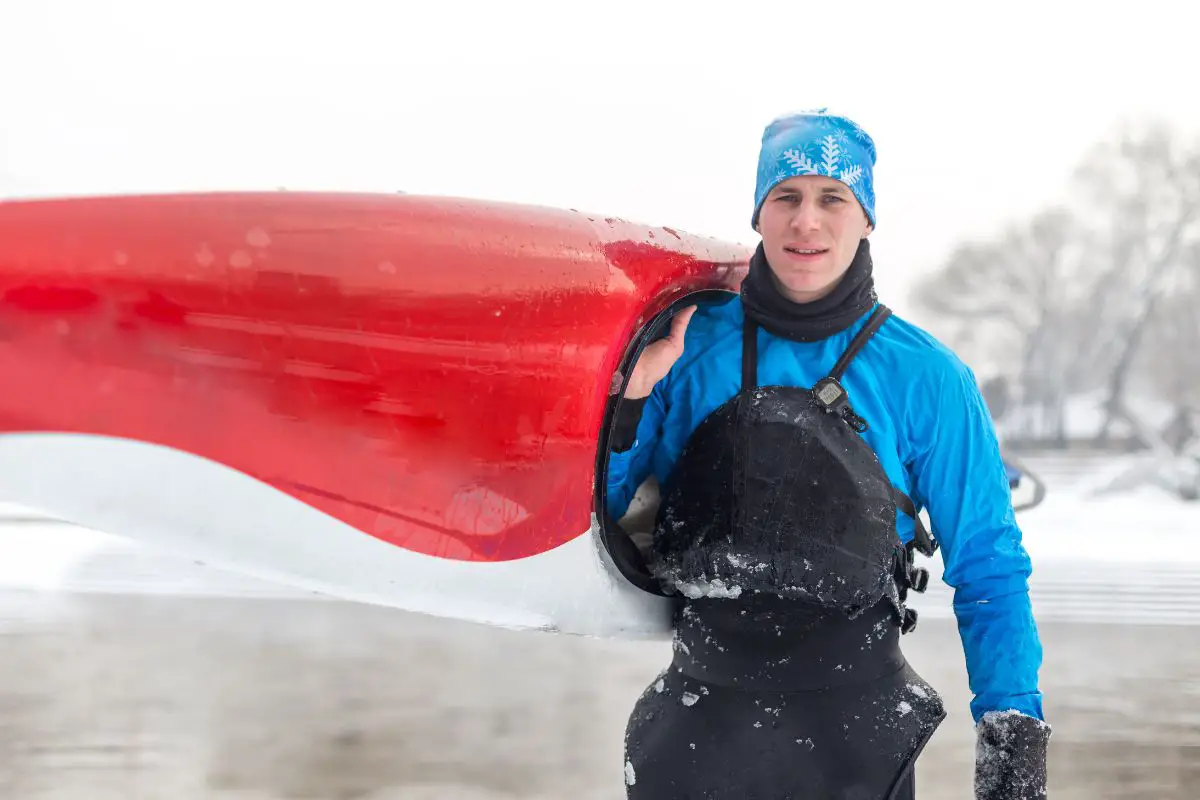

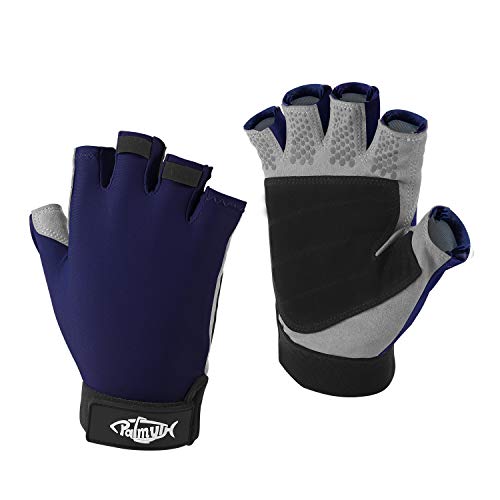

![What Is the Average Kayak Speed? [Max Speed Calculator Included]](https://outdoorskilled.com/wp-content/uploads/2023/02/kayaking-23-768x512.jpg)
